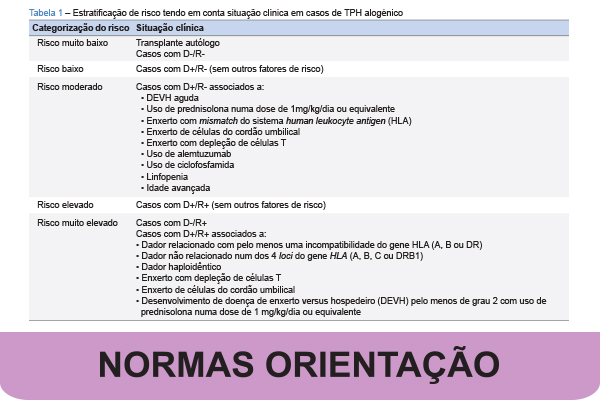SOCIAL MEDIA
Portuguese Medical Association's Scientific Journal

Cytomegalovirus (CMV) is a type of double-stranded deoxyribonucleic acid virus belonging to the herpesviridae family. Following a primary infection, the virus becomes latent in various types of white blood cells. Cytomegalovirus infection can remain latent or become active, especially in immunocompromised individuals, such as those undergoing hematopoietic stem cell transplantation (HSCT), where CMV reactivation can occur. In this context, CMV infection is common and associated with high rates of morbidity and mortality. Pneumonia is one of the most serious complications, with mortality rates exceeding 50%. Additionally, even in the absence of organ-specific disease, CMV infection is related to increased mortality unrelated to hematologic neoplasm recurrence. Given the frequency and severity of this infection in HSCT patients, it is crucial to implement effective strategies for monitoring, prevention, and treatment. This guideline was developed to identify patient groups that benefit from a systematic approach to CMV infection and to define the most appropriate strategy for each group. Monitoring CMV viral load in peripheral blood is crucial, especially in patients at moderate to high risk of active infection. Primary prophylaxis with letermovir (an antiviral drug) is recommended to reduce the incidence of active infection, especially in high-risk patients. Secondary prophylaxis with valganciclovir (antiviral drug) is recommended after an episode of active infection, while preemptive and disease treatment is based on monitoring viral load and clinical response. The aim of this guideline is to improve the approach to CMV infection in HSCT patients, ensuring an effective and safe preventive and therapeutic approach.